Most people would never call plants ugly. Why would we?
When all we see around us is breathtaking natural vegetation. It may not surprise gardeners, but some qualify as the world’s most ugly plants.
Plants, primarily flowers, boost the mood by looking beautiful and smelling even better.
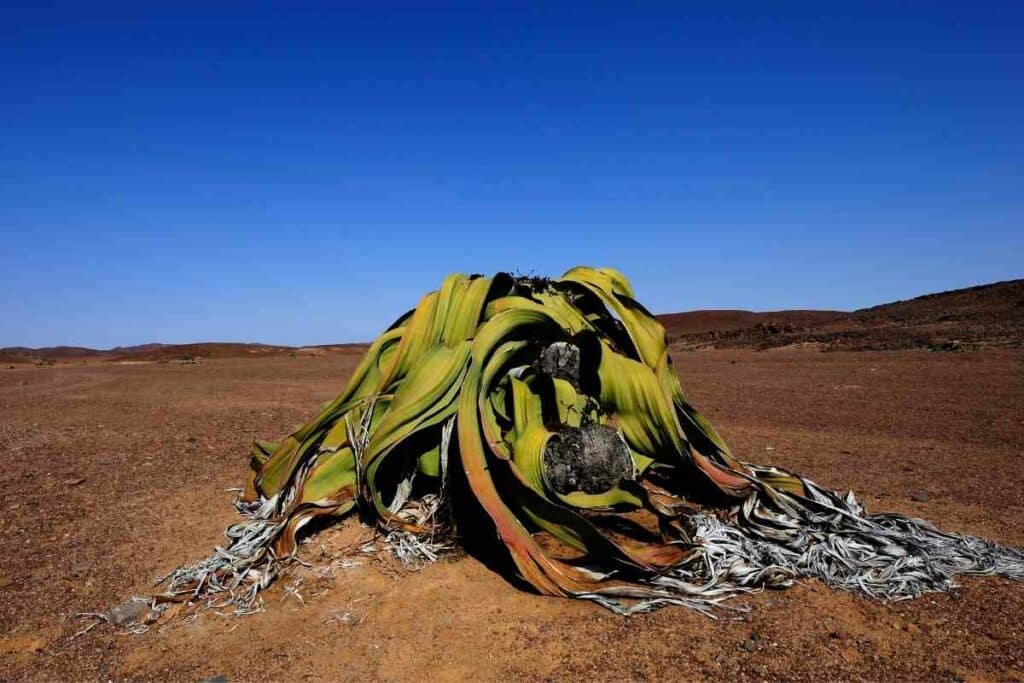
Likewise, an appealing landscape, at home or in the office, enhances the emotional well-being of the people around it.
While most plants we grow are attractive, some are simply ugly. But their nature does not stop gardeners from planting them, as their existence is fascinating.
Mixing a few varieties in your garden can add to the mystery, considering plants are good conversation starters.
Look at the below list of the world’s most ugly plants.
1. Monkey Cups
Commonly known as the tropical pitcher plant or Nepenthes, this hanging plant species are carnivorous.
They are native to Southeast Asia, Australia, and North America.
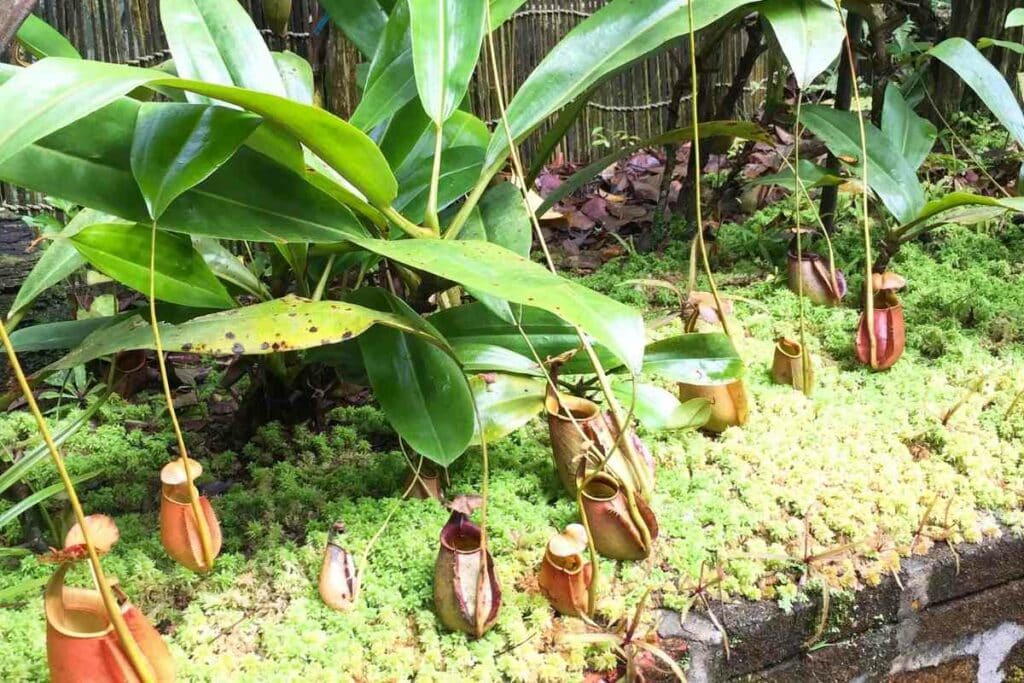
The hundreds of various species grow as vines, which can climb walls or require support to spread. Their long pale-green and cup-like flowers capture and trap small insects and prey as food.
The insects are attracted by the nectar inside the trap, which has a lid that immediately closes.
A pool of slimy nectar and tiny hairs at the bottom of the pitcher drowns the insects, preventing them from escaping.
Enzymes then digest the prey to provide minerals for the plant. Finally, although the flowers are petal less, they produce tiny seeds scattered by the wind for reproduction.
2. Bladderwort
Utricularia, as they are commonly known, grow around the world in hundreds of species, although they originate from North America.
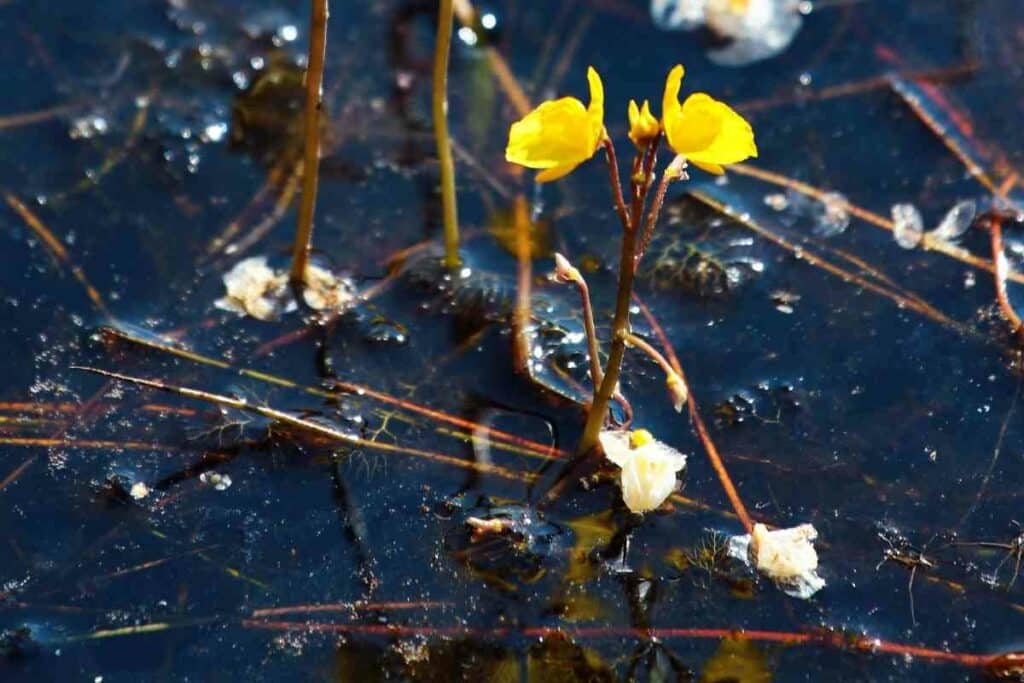
Varying in flower colors, these plants are not said to be ugly due to their physical appearance. Instead, their flowers are surprisingly brilliant and good-looking.
However, bladderworts form the largest group of carnivorous plants. They have hollow traps known as bladders that open to catch tiny organisms as food.
When the small creatures land on them, the hairs at the trap doors capture them. It takes less than three milliseconds for the doors to open and close, sucking in the prey.
They especially love feeding on larvae from mosquitoes and water flies.
Bladderworts are either aquatic or tropical. The marine variety grows submerged in water or swampy areas except for the flowers, which float on water.
As a Result – Tropical bladderworts require adequate moisture and are common in households as houseplants. Their roots are shallow growing; depending on the genus, they can be annuals or perennials.
3. Strangler Fig
Strangler figs are several tropical species that grow on a host plant until they suffocate and kill it.
Native to tropical forests across the world, they surprisingly make their food. They, therefore, do not need the host tree to survive.
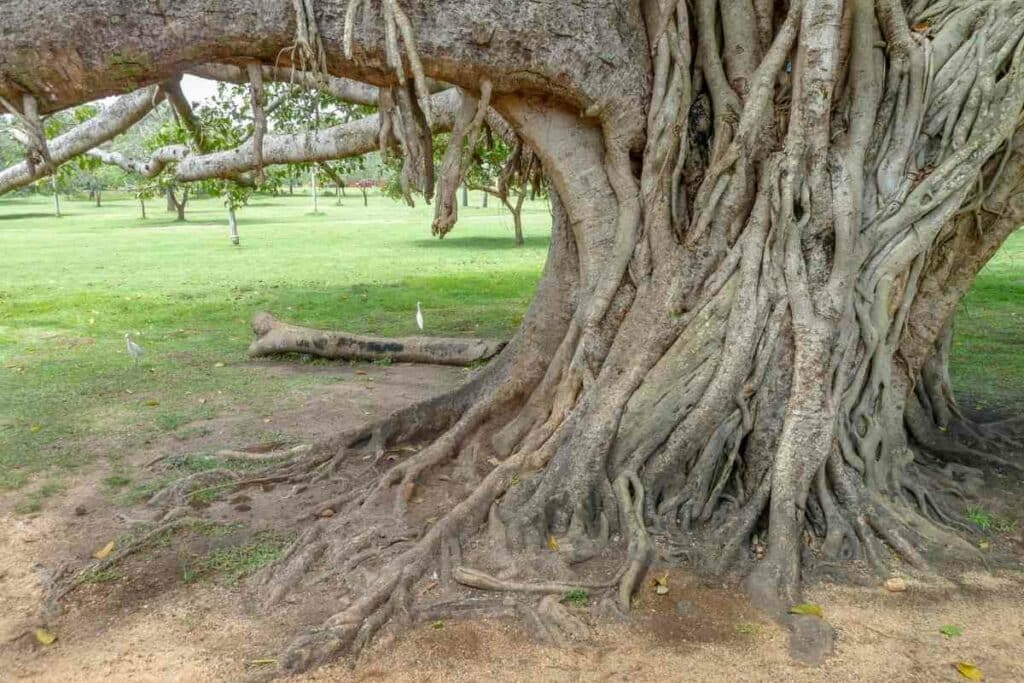
Over 100 species of strangler figs grow from a single seed. The seeds are usually sticky and may be left on another tree by a bird or animal.
The roots begin growing downwards from the top of the tree until they reach the ground. They survive on air around the other tree until they enter the soil.
The strangler’s fig vines and roots cover and strangle the entire host tree until it cannot compete anymore.
Some host trees survive the invasion, but most die off after a while. What is left behind is a large fig tree whose trunk looks like a massive cyclone of roots.
The center of the strangler fig is left hollow, leaving room for rats, bats, and other rodents to use as shelter or breeding grounds.
4. Corpse Flower
Titan arum or Amorphophallus titanium is the world’s enormous and smelliest flower.
When it blooms, it smells foul, almost like a dead living organism.
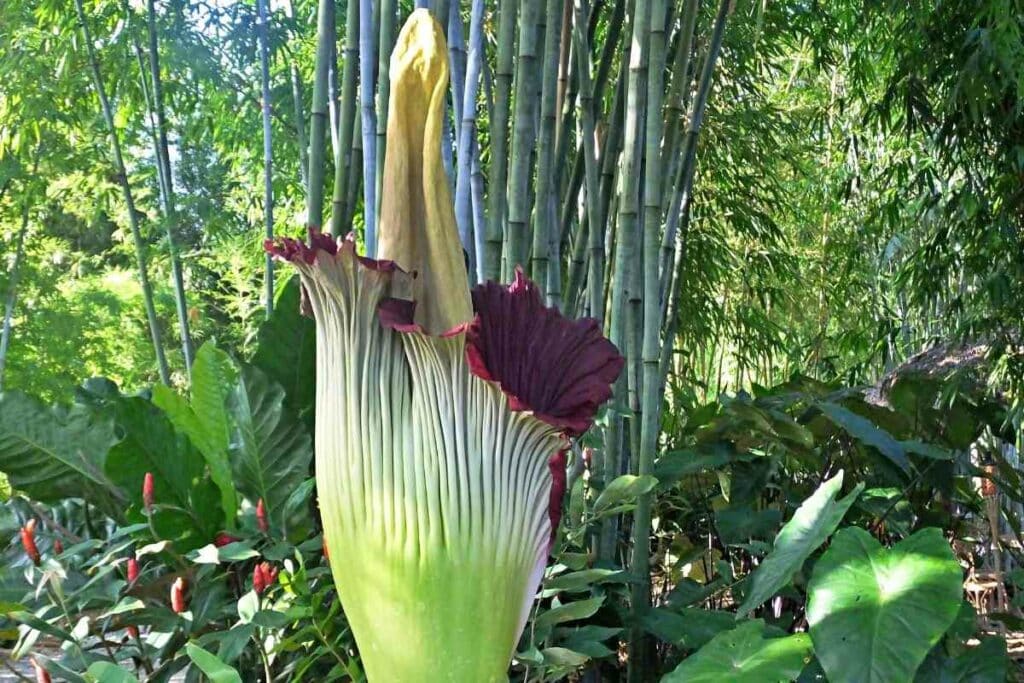
Luckily, this plant only blooms once every several years, and the flower lasts less than two days.
Despite the stinking smell, the corpse flower is popular among botanists who are fascinated by the nature of the plant.
The corpse flower is native to Sumatra, in Southeast Asia but is now grown in rare gardens worldwide.
The large flower holds hundreds of smaller flowers that produce oils and collect heat.
Due to the high temperature, the oils produce a foul smell that is meant to attract bugs and insects for pollination.
5. Tree Tumbo
Welwitschia mirabilis plant resembles wilting and dying sisal plants.
However, this is its unusual yet natural appearance.
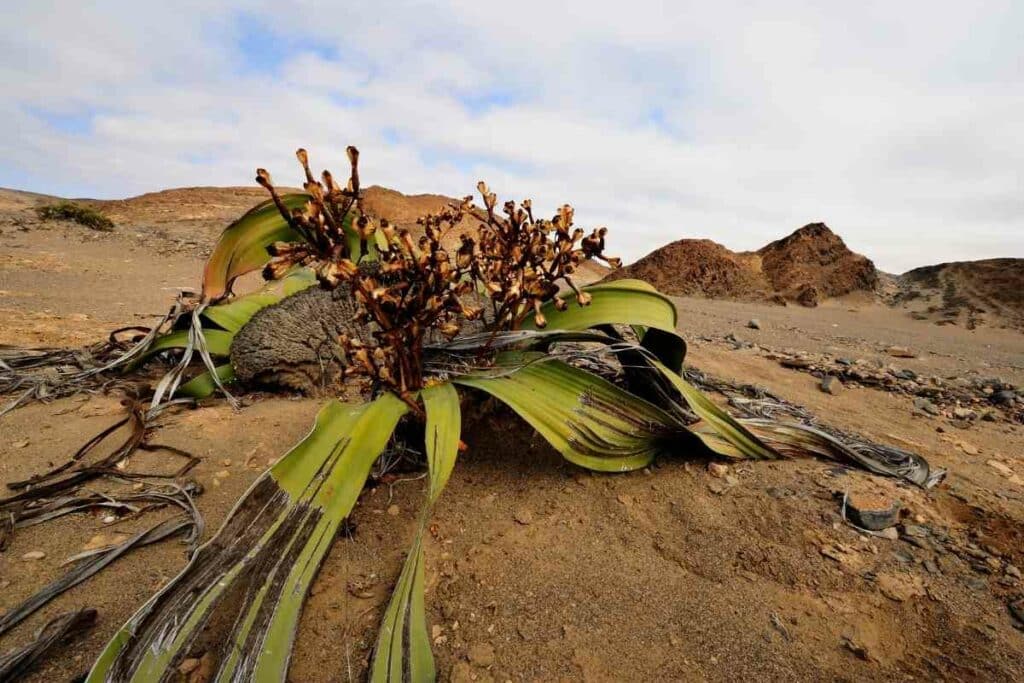
Native to the Namib Desert in Africa, tree tumbo plants thrive in a dry, harsh climate with less than an inch of rainfall yearly.
The brown and green mass of soft plant leaves may seem to rot to the ground, but it is healthy.
The root structure of the tree tumbo resembles that of a carrot. Its thin and long root grows more than 30 meters below ground to absorb as much moisture as possible in the desert.
As a Result – The plant is protected from the intense desert winds that threaten to uproot it.
The half-brown and green leaves have grown the same way over hundreds of years. A single-tree tumbo plant can survive over a thousand years.
6. Stinky Squid
Pseudocolus fusiformis is a mushroom/fungi plant common in mixed forests worldwide.
The stinky squid earned its name due to its three tall stems growing from the ground.
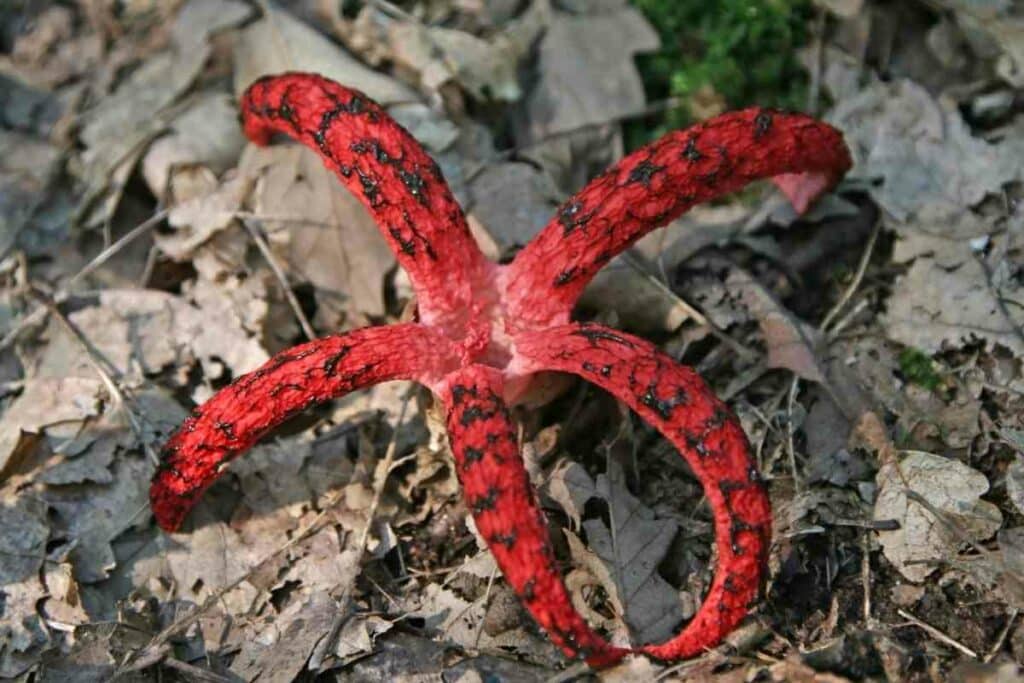
The co-joined arm-like stalks are an orange color covered in black-greenish slime that smells like fresh animal manure.
The slime contains spores that insects spread. Although some species are said to be edible, the stinky smell deters people from harvesting them.
Animals, especially dogs, are attracted to stinky squids and may eat them. Consumption of this fungus by dogs can lead to stomach upset and can be deadly if taken in large quantities.
7. Lithops Karasmontana
Popularly known as the stone plant, this succulent looks like a pale gray brain matter with a reddish center.
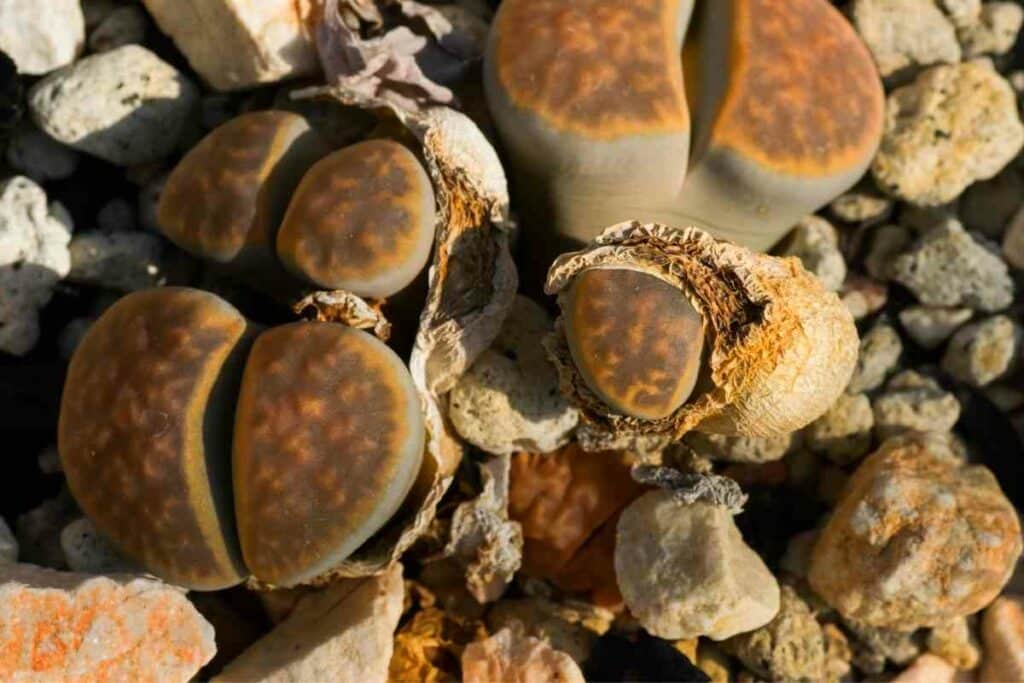
Native to Southern Africa, stone plants grow in rock crevices in desert mountains and rocky landscapes.
The tiny pebbles with a cleft in the middle are easily mistaken for rocks but are usually semi-covered by tiny thick leaves.
They grow in clumps of two to over six heads in one plant, slightly submerged in soil.
Lithops are inedible plants, as the appearance of stone deters herbivorous animals from eating them.
8. Sea Onion
Bowie Volubilis is a bulb-like succulent native to parts of Eastern and Southern Africa.
The perennial climbing sea onion has a round bulb that resembles an onion that grows above the soil.
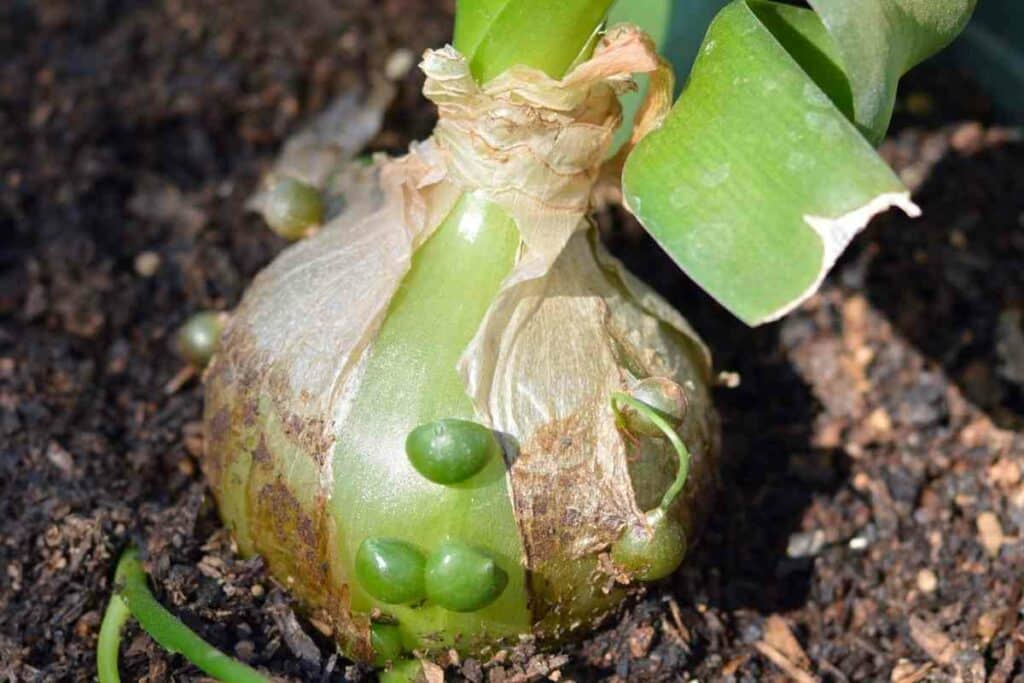
It has several light brown scales that cover the bulb and can keep growing in size over several years.
The bulb sprouts long and thick vines without leaves that flourish in summer, requiring support.
The skin on the bulbs peels off during winter when the plant goes into dormancy.
Heads Up! Sea onions are very poisonous; hence one should avoid ingesting them. The sap it produces can also cause skin irritation in some people.
9. Vegetable Sheep
Native to New Zealand, Raoulia rubra is a cushion-like plant species.
The large grey-white clumps grow on rocky mountain surfaces to resemble grazing sheep.
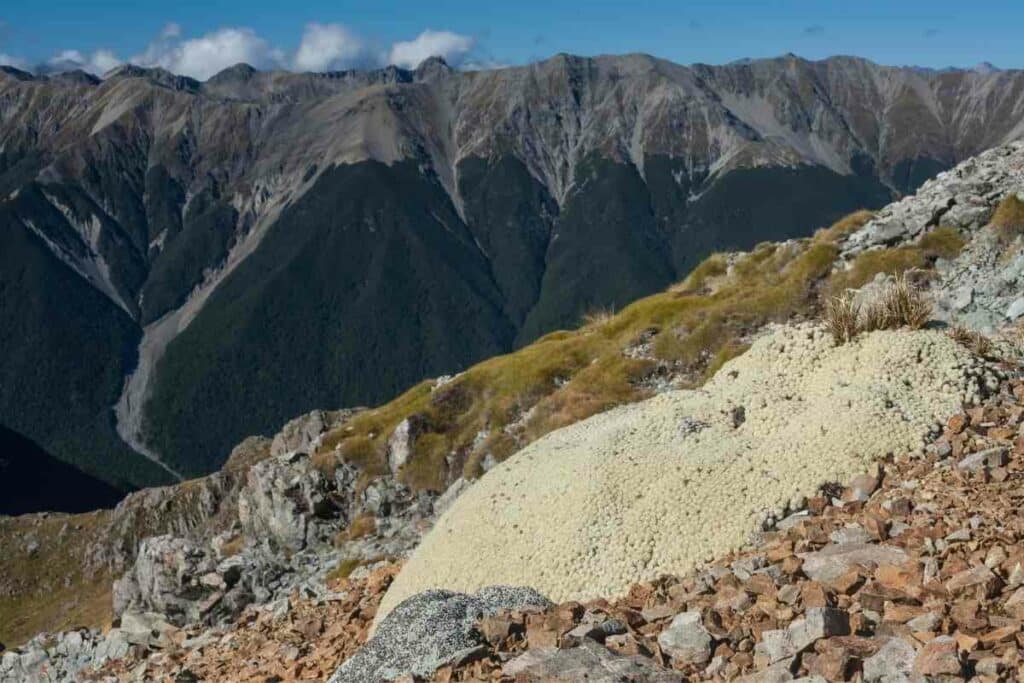
The small leaves grow and then die beneath the clumps of tightly packed sponges that hold water.
Although the plants look fleshy from a distance, they are rugged with an almost rock-like texture.
The hard outer layer helps them store moisture due to the harsh desert climate of their surroundings.
During winter, the plant is covered by snow, but the thick skin protects it from the snow’s heavy weight.
Which plant is ugliest in the world?
An online vote of the world’s most ugly plants produced surprising results.
Of the nine plants listed here, their score was as follows, from the ugliest to the least ugly:
- Corpse flower
- Stinky squid
- Vegetable sheep
- Tree tumbo plant
- Monkey cups
- Sea onions
- Bladderwort
- Strangler fig
- Lithos Karasmontana
The corpse flower was unanimously voted as the ugliest plant worldwide.
However, the rare phenomenon attracts thousands of visitors proving there is beauty in the ugly.
Unfortunately, some orchid flowers also make the ugly list, although they are not as expected.
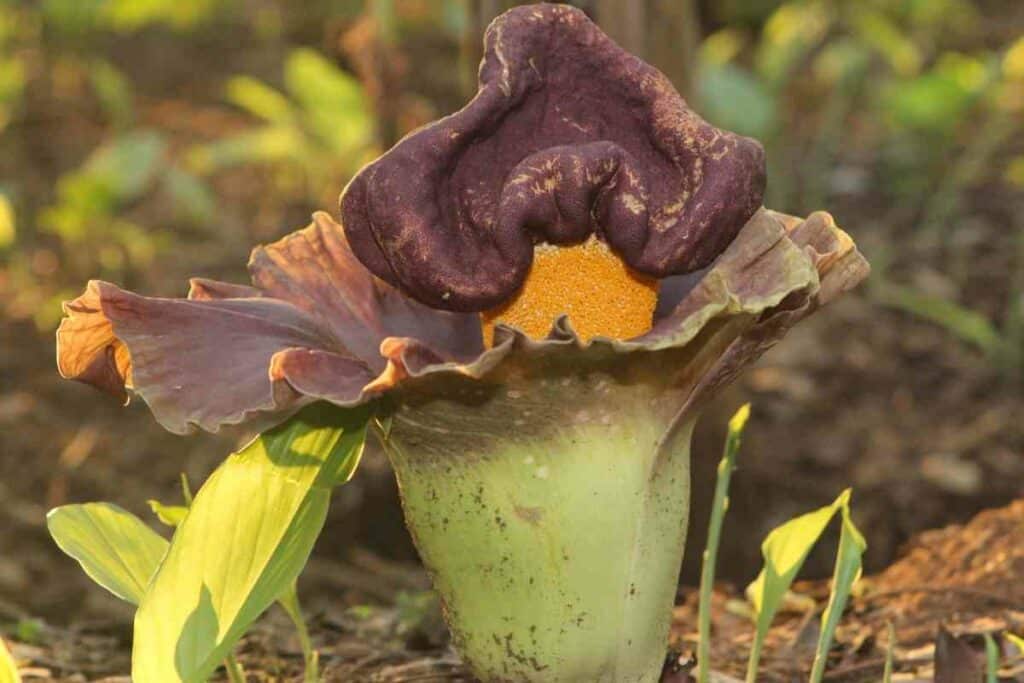
The new orchid flower species are known as Gastrodia agnicellus and grow in Madagascar.
Botanists from the United Kingdom recently made the unusual orchid flower discovery.
It resembles a reddish-brown cup of rotting flesh. The brown flowers, fortunately, do not produce a bad smell.
Flies also pollinate this flower which relies on fungi for nourishment as it does not have leaves to photosynthesize.
Conclusion
To the world’s most ugly plants, the term ugly does not necessarily refer to a plant’s physical appearance.
For example, some have beautiful flowers that produce horrible smells, while others behave in an ugly manner.
They may grow where they are unwanted, taking over your garden in an unsightly mess.
Additionally, others are predatory as they feed on living organisms, while others have an actual hideous appearance. Inedible poisonous plants and fungi that are life-threatening to human beings are also added to the list.
However, despite all the differences, these plants attract people due to their unusual nature.
Growing the readily available variety in your home garden is possible if you can find them.
What could be ugly to you may be attractive to another, so check if your local nursery has a few.


